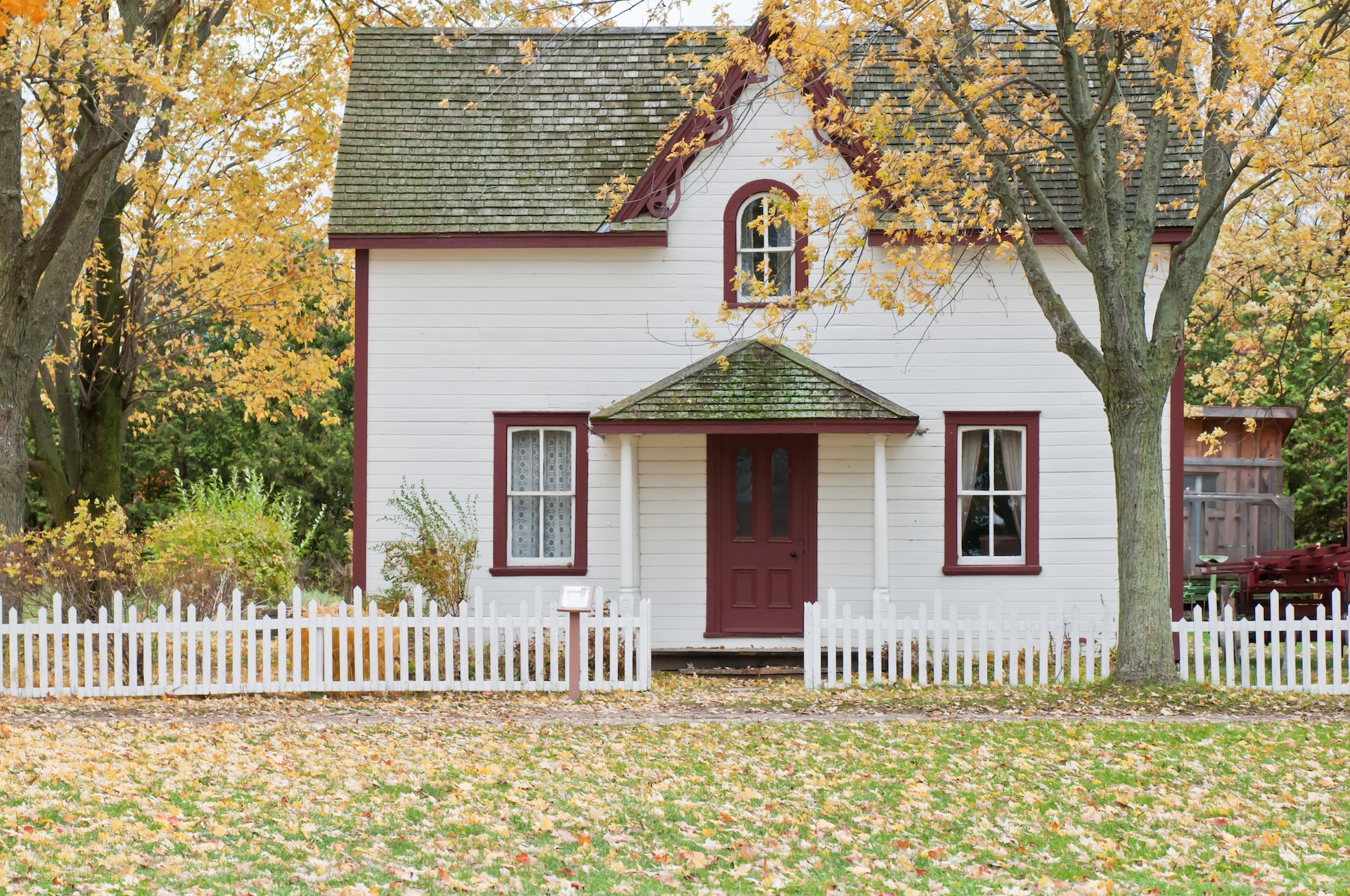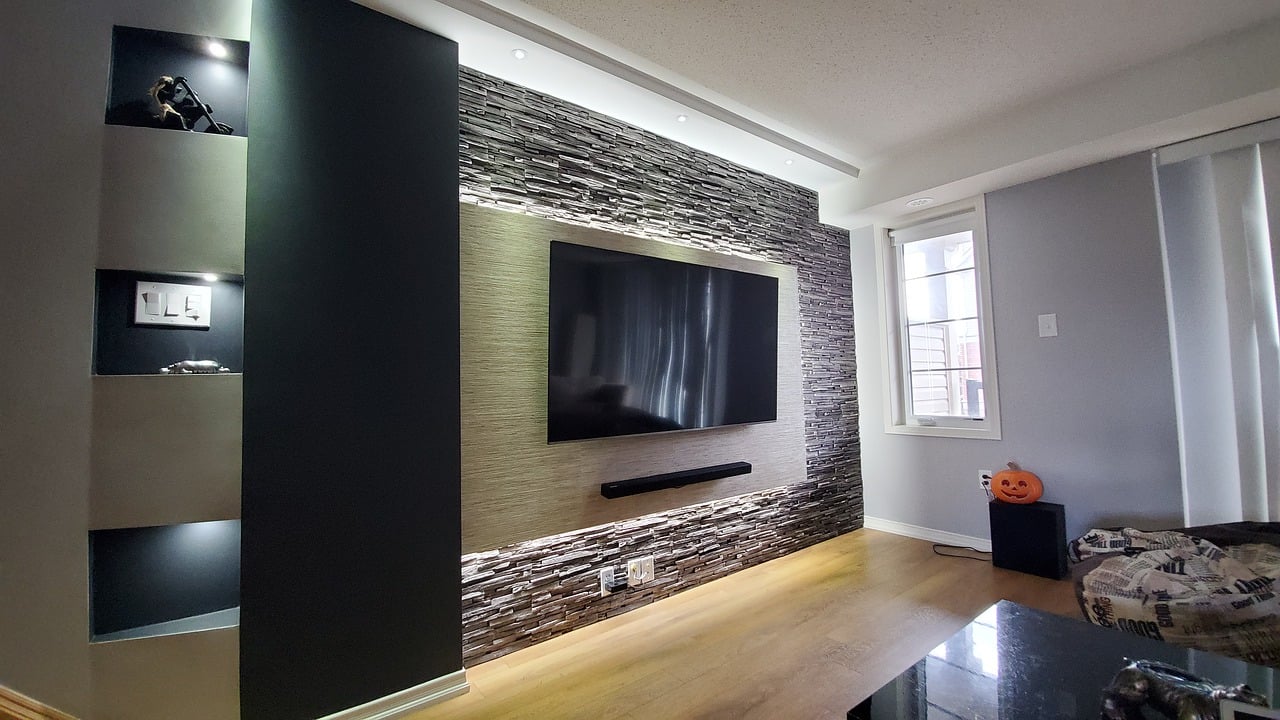neighborhood safety weigh on your decision. But did you know that the neighborhood crime rate can also significantly impact your home insurance rates? This article explores the relationship between neighborhood crime and home insurance costs, helping you make informed decisions to protect your investment.
Before understanding how neighborhood crime rates affect your insurance premiums, let’s first understand what determines homeowners insurance rates. It’s crucial to grasp these factors to make informed choices and secure the right coverage for your home.
What determines home insurance rates?
Each element plays a significant role in shaping how home insurance rates are determined, from the crime rate in your neighborhood to the value of your property, the age and characteristics of your home, and your claims history.
Neighborhood crime rates
While the right home may tick all the boxes, consider how the local crime rate impacts your home insurance rates. It’s a pivotal factor that often goes unnoticed but holds significant weight. Insurers prioritize your home’s location when calculating premiums and heavily rely on crime statistics specific to your area. This data helps them assess the risk of theft, vandalism, and property damage. Living in a high-crime neighborhood can lead to higher insurance premiums, making it essential to factor this into your budget when purchasing a home.
Property value and replacement cost
Another influential factor in determining your home insurance rates is the overall value of your property and the potential cost of replacing it in case of damage or loss. Insurance companies consider the current market value of your home, including factors like square footage, location, and the cost of materials used in construction. Understanding how these elements affect insurance rates can help you manage costs effectively.
Home characteristics and age
The specific characteristics of your home and its age also contribute to the calculation of insurance rates. Factors such as the type of construction materials, safety features, and the overall condition of your home are assessed by insurers. Older homes, for instance, may have higher insurance premiums due to the increased likelihood of structural issues or outdated safety features. Conversely, newer homes often benefit from lower insurance rates thanks to improved construction standards and safety measures.
Claims history and deductibles
Your personal claims history and the deductibles you choose are two more pieces of the puzzle influencing your home insurance rates. A history of frequent claims can result in higher premiums, as it indicates a higher level of risk to the insurer. The deductible you select also plays a significant role in determining your rates. Opting for a lower deductible means you’ll pay less out of pocket in case of a claim, which can lead to higher monthly premiums. Choosing a higher deductible can lower your premiums but requires you to cover more initial costs when filing a claim.
Neighborhood crime rates and home insurance
The impact of neighborhood crime rates on your home insurance premiums is far from arbitrary; it’s a direct correlation grounded in risk assessment.
High-crime vs. low-crime areas and home insurance rates
The difference between living in a high-crime area and a low-crime area can be substantial regarding insurance premiums. This is the insurance industry’s way of accounting for the elevated likelihood of claims being filed in these neighborhoods. When choosing a neighborhood to call home, weigh the pros and cons, including considering the potential impact on your insurance costs. While a high-crime area might offer lower property prices, the associated insurance premiums can quickly increase. Living in a low-crime area might come with higher upfront costs, but it often translates to more affordable insurance rates, saving you money in the long run and providing peace of mind.
Insurance risk assessment
Understanding how insurance companies assess risk is at the core of comprehending the relationship between neighborhood crime rates and your insurance premiums. This process, known as underwriting, involves evaluating various factors, including crime rates. Insurers use underwriting to determine the level of risk associated with providing coverage for a specific property. Neighborhood crime rates, insurance underwriters examine the historical and current crime data for the area where your home is located. They consider the types of crimes, their frequency, and the severity of property damage. Based on this assessment, underwriters assign a risk score to your property, which is pivotal in determining your insurance premiums. The higher the assessed risk, the more you can expect to pay in premiums to adequately cover your home.
Mitigating the impact of crime rates on home insurance
Neighborhood crime rates can significantly affect your home insurance premiums, but the good news is that there are proactive steps you can take to mitigate this impact. By implementing various strategies and safety measures, you not only enhance the security of your home but also potentially lower your insurance rates.
Home security measures
One of the most effective ways to reduce the influence of crime rates on your insurance premiums is by enhancing the security of your home. Insurance providers often reward homeowners who protect their properties from theft and vandalism. Here are some key home security measures that can help lower your insurance costs:
- Install a security system: Consider installing a professionally monitored security system in your home. These systems include burglar alarms, motion detectors, and security cameras. Having a monitored security system can not only deter potential criminals but also earn you substantial discounts on your insurance premiums.
- Strengthen entry points: Reinforce doors and windows with high-quality locks and materials. Many insurers appreciate the extra effort homeowners put into making their homes more secure and offer discounts for these upgrades.
- Secure outdoor areas: Ensure your outdoor spaces are well-lit and free from hiding spots. Adequate outdoor lighting and trimmed landscaping can help deter criminals.
- Smoke and fire alarms: In addition to protecting against theft, having functioning smoke and fire alarms can lead to safety discounts on your insurance policy.
Neighborhood watch programs
Community involvement can make a significant difference in reducing crime rates and, consequently, your insurance premiums. Joining or starting a neighborhood watch program can be a proactive step in enhancing safety and security. These programs involve neighbors looking out for one another and reporting suspicious activities to law enforcement. By actively participating in such programs, you contribute to a safer environment and demonstrate to your insurer that you’re taking measures to reduce risks. This involvement could lead to lower insurance rates.
Other determinants of how home insurance rates are determined
Several other elements play a significant role in shaping your insurance premiums.
Weather-related risks
Weather-related risks, such as hurricanes, floods, and wildfires, can profoundly impact your home insurance rates. These natural disasters significantly threaten homes and properties, leading to costly claims for insurers. To prepare for these risks and find the right coverage:
- Assess your location: Understand the specific weather risks associated with your area. Coastal regions might face hurricane risks, while homes near rivers could be prone to flooding. Once you know these potential threats, you can tailor your insurance coverage accordingly.
- Consider additional policies: Depending on your location and the level of risk, you may need to purchase additional policies or riders to cover specific weather-related perils. For example, flood insurance is typically a separate policy from standard homeowners insurance.
- Home mitigation: Implementing home mitigation measures can protect your property and lower your insurance rates. These measures include reinforcing your roof, installing impact-resistant windows, or elevating your home in flood-prone areas.
Liability coverage needs
Liability coverage is another aspect of home insurance contributes to your overall premium. Liability coverage protects you if someone is injured on your property and you’re found legally responsible.
- Evaluate your risk: Consider factors that could increase your liability risk, such as having a swimming pool or a dog with a history of aggression. A clearer picture of your potential liability exposures helps you determine the appropriate coverage limits.
- Umbrella policies: Sometimes, homeowners opt for umbrella liability insurance policies to provide additional liability protection beyond what their standard home insurance offers. This added layer of coverage can be valuable, especially if you have substantial assets to protect.
Homeowner’s Credit Score
Your credit score, often used to evaluate your financial stability and reliability, can impact your ability to secure a mortgage and your home insurance rates. The connection between your credit score and insurance rates lies in the belief that individuals with better credit tend to file fewer insurance claims.
- Monitor your credit: Regularly check your credit report for accuracy and address any discrepancies promptly. Monitoring your credit can help you maintain a healthy score.
- Improve your credit: If your credit score needs improvement, take steps to enhance it. This might include paying bills on time, reducing outstanding debt, and managing your credit responsibly.
- Shop around: While some insurers consider credit scores when determining rates, not all do, or they may weigh it differently. Shopping around for insurance quotes can help you find a company that offers competitive rates based on your financial situation.
While neighborhood crime rates are significant in determining your home insurance rates, they are part of a broader picture. Understanding how weather-related risks, liability coverage needs, and your credit score contribute to your insurance premiums empowers you to make informed decisions about your coverage and find ways to manage your insurance costs effectively.
As you go on your journey to homeownership, remember that knowledge is your greatest ally in securing the right coverage at the best possible rates. Stay informed, stay safe, and enjoy the peace of mind of a well-protected home.




